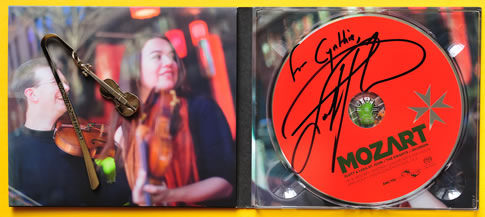
This is a leap of faith that has a dollar sign implication to my pocket. A theater adaptation of Murakami’s The Wind-up Bird Chronicle. Would that work? We have seen the film adaptation of his Norwegian Wood. While the content by and large appears to be faithful to the book, some essence in my opinion is lost. As for this upcoming play, fortunately, I have some help in making the decision of to watch, or not to watch. If you are tantalized by the news that The Wind-up Bird Chronicle is going to be performed at Singapore Esplanade Theatre, look no further. There is expert advice for sharing, and there are some personal thoughts I have for you. Let’s start with the expert views.
Expert Views
Last weekend, I was invited for a panel discussion at Ngee Ann City’s Kinokuniya bookstore. The topic was The Art of Adaptation: Moving Beyond the Pages. The discussion was facilitated by Kenneth Kwok, Deputy Director from the National Arts Council. The two speakers were Margaret Chan, theater actress and academic, and Adeline Chia, arts correspondent with Straits Times. I did not know what to expect or what was expected of me, because I have not attended a panel discussion in public before. The last time I spoke through a pair of loudspeakers in Orchard was when my band performed for a charity. This time, it did feel odd speaking in public voicing my personal opinions with shoppers passing by. Just a little bit.
I don’t think Margaret Chan has read this book, or any of Murakami’s novel. Her discussion contribution was largely based on her experience as a theater actress. She quoted that authors are dead. It is the readers who keep the books alive, or audience who ‘make’ the movie. I suppose what it means is that forget about how much is being adapted, what do you get out of it? How do you interpret the story? She also highlighted that in a theater setting, it is often rich in visual imagery. Live acting also adds a unique flavor to the presentation of the art. Something we may wish to take note of when we watch The Wind-up Bird Chronicle as a play.
Adeline Chia, on the other hand, has read many of Murakami’s works. She is such a fan that she does not want to watch the film adaptation of Norwegian Wood knowing well that the movie may not live up to the expectation. Fair enough. Does she think that a film can be as good as, if not better than a book? It is possible, she said. And she cited a few examples such as No Country For Old Man, Paprika, and The Shining. As for me, I am finding it hard to make comparison between different medias of adaptation (including video games). It boils down to one thing: How do you like the experience? There are instances whereby watching a movie like Troy could well be a better experience for most mortals today than reading that book (I am looking at you, Homer). Mel Gibson has done a great job in directing The Passion, an adaption of one of the Bible stories. Paulo Coelho has also done a fantastic book adaption of the story of Elijah from the Hebrew Bible. His book is called The Fifth Mountain. A Game of Thrones TV adaptation seems to have done well, something I would like to judge it myself once I get hold of the discs.
There are many examples that adaptation can be successful. I wish Margaret and Adeline could tell us more about the ingredients of success. Their advice is: Forget about the book and enjoy the play as it is. As someone who has read the book and is a big fan of Murakami, I would need something more to make that decision of to watch, or not to watch.
My Thoughts
I am not sure if the 68-page photo booklet titled Making of Wind-up Bird Chronicle by the director Stephen Earnhart would be on sales in the evenings of the performance. If you are a fan of the play, do grab a copy. It is filled with beautiful photographs – on set and beyond – as well as a brief documentation of his creative process. Before creating this play, Earnhart has lived in the Far East for almost a year. He talked to the locals, even met up with Murakami without knowing the author’ superstar status. To visually present the interrelation of realism and surrealism, Earnhart relies on light and technology and props such as a puppet. I do not know what the outcome of the play is to be. As someone who has read the book, the photographs taken from the set seem convincing. Hence, the leap of faith.
I will not walk into the theater pretending that I have not read the book. Specifically, I would like to see how the director and his crew tackle the theme of free will versus fate. I also want to see how the abstract concept of something can be visually presented. Because the book puts much emphasis on each of us having that something within that defines who we are. I want to see how the unseen world is interpreted by the director. In additional, I am also interested to see how metaphors are incorporated into the play. I am looking forward to hearing some Jazz music and seeing some kitchen scenes – signatures of some of Murakumi’s stories. Last but not the least, I want to experience the loneliness at the bottom of a well through the actor. If you are interested, a deeper discussion can be found in my book review.
Where to Get the Tickets?
There are three time slots in total – May 25, 2012 (Fri) 8pm, May 26 (Sat) 3pm & 8pm. Cynthia and I are going to watch the last session. Thinking of joining us? Head to Sistic.com.sg today!


